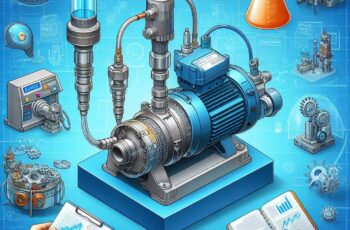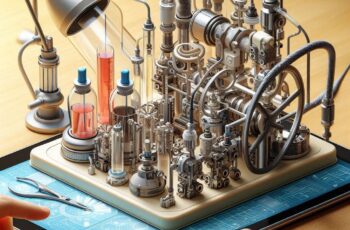Peristaltic Pump Diagram: A Comprehensive Guide
A peristaltic pump is a unique and highly useful piece of equipment, often used in applications where the precise movement of fluids is required. In this article, we’ll dive into the concept of peristaltic pumps, explore how they work, and explain a typical peristaltic pump diagram. By the end of this guide, you’ll have a deeper understanding of these pumps and their vital role in various industries.
What Is a Peristaltic Pump?
A peristaltic pump is a type of positive displacement pump that moves fluid through a flexible tube. It uses mechanical force to push fluids along by compressing the tube and forcing the liquid to move forward in a controlled manner. This makes it highly reliable and perfect for applications that require accurate dosing or transferring fluids without contamination.
How Does a Peristaltic Pump Work?
The working mechanism of a peristaltic pump can be easily understood when we break it down:
- Compression Action: The pump uses rollers or shoes that rotate around the tube. These rollers apply pressure to the tube in a manner that mimics the peristalsis process seen in biological systems, like the human digestive tract.
- Fluid Flow: As the rollers move along the tube, they pinch it, forcing the fluid to move from one side of the pump to the other.
- No Contamination: Since the fluid only comes into contact with the inner surface of the tube, there’s little chance of contamination or backflow.
Peristaltic Pump Diagram Explained
A typical peristaltic pump diagram shows several key components that work together to create a seamless fluid flow system:
- Motor: The motor is the driving force behind the pump, rotating the rollers that compress the tube.
- Rollers: The rollers are positioned around the flexible tubing. As they rotate, they compress the tube, pushing the fluid forward.
- Tube: The flexible tubing serves as the conduit for the fluid being pumped. It’s typically made from materials like silicone or rubber.
- Pump Head: The pump head holds the rollers and the tube in place, ensuring that the movement is controlled and consistent.
- Outlet: The outlet is where the fluid exits the pump, typically connected to a pipe or another piece of equipment.
- Inlet: The inlet is where the fluid enters the pump, typically connected to a reservoir or another fluid source.
Key Components of a Peristaltic Pump
Motor
The motor in a peristaltic pump drives the rotation of the rollers, which compress the tube and push the fluid through. Depending on the pump’s design, the motor could be an electric motor, a stepper motor, or even a pneumatic drive in some cases.
Rollers or Shoes
These are the components that apply pressure to the tube, which is crucial in ensuring the fluid is moved effectively. The rollers or shoes vary in size, material, and number depending on the specific design of the pump.
Flexible Tube
The tube is a critical part of a peristaltic pump because it is where the fluid flows. The flexibility of the tube allows it to be compressed and released by the rollers, and it is often made from materials that are chemically resistant to ensure that the fluid being pumped doesn’t damage the system.
Pump Head
The pump head holds everything together: the tube, rollers, and motor. Its role is to maintain the position of the rollers in relation to the tube, ensuring the pumping action is smooth and efficient.
Inlet and Outlet
These two components allow the fluid to enter and exit the pump. The inlet connects to a fluid source, while the outlet leads the fluid into the next part of the system.
Advantages of Peristaltic Pumps
- Accurate Flow Control: Peristaltic pumps offer precise control over the amount of fluid being moved, making them ideal for applications that require accurate dosing.
- No Contamination: Since the fluid only touches the inside of the tube, there’s no risk of contamination from the pump components. This is especially useful in industries like pharmaceuticals and food processing.
- Self-Priming: Peristaltic pumps can be self-priming, meaning they can start up without needing to be manually primed with fluid.
- Handling of Viscous Fluids: Peristaltic pumps are capable of pumping highly viscous fluids without difficulty, making them suitable for a range of challenging applications.
Applications of Peristaltic Pumps
Peristaltic pumps are used across various industries, such as:
- Medical: In fluid handling for dialysis, blood collection, or drug delivery systems.
- Pharmaceutical: For precise dosing and transferring chemicals and medicines.
- Food and Beverage: In applications like juice production, where hygiene and contamination control are critical.
- Chemical: Used in processes that require the handling of aggressive or hazardous chemicals.
- Water Treatment: For dosing chemicals in water treatment plants.
Peristaltic Pump vs Other Types of Pumps
Compared to other pumps, such as centrifugal pumps or diaphragm pumps, peristaltic pumps stand out due to their ability to handle highly viscous fluids, their self-priming nature, and their suitability for applications requiring sterile or contamination-free environments. Their simple design and the fact that the fluid never comes into contact with the pump’s moving parts make them highly reliable and easy to maintain.
How to Maintain a Peristaltic Pump
To ensure a long lifespan and efficient operation, regular maintenance is necessary. Here are some tips:
- Check the Tubing: Over time, the flexible tubing can wear down, especially if exposed to harsh chemicals or frequent use. Regularly inspect and replace it as needed.
- Lubricate the Rollers: Lubrication ensures that the rollers move smoothly without causing excessive wear to the tubing.
- Clean the Pump: Periodically clean the pump head and components to prevent build-up of residue from the fluid being pumped.
Conclusion
In conclusion, the peristaltic pump is a highly effective and versatile fluid handling system, offering precise control and contamination-free operation. By understanding the key components and how they work together in a peristaltic pump diagram, you can better appreciate the pump’s functionality and its many applications in different industries.

